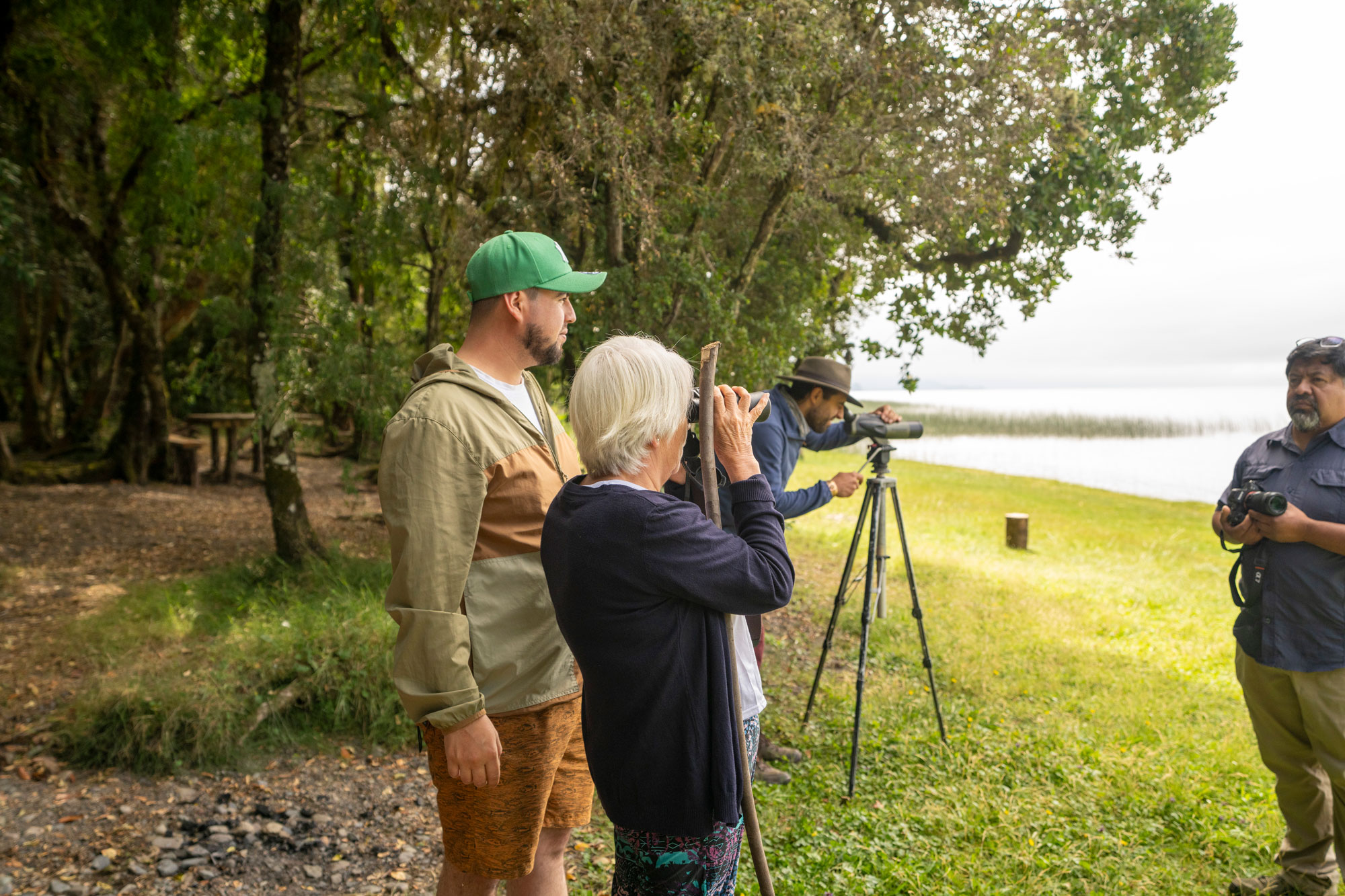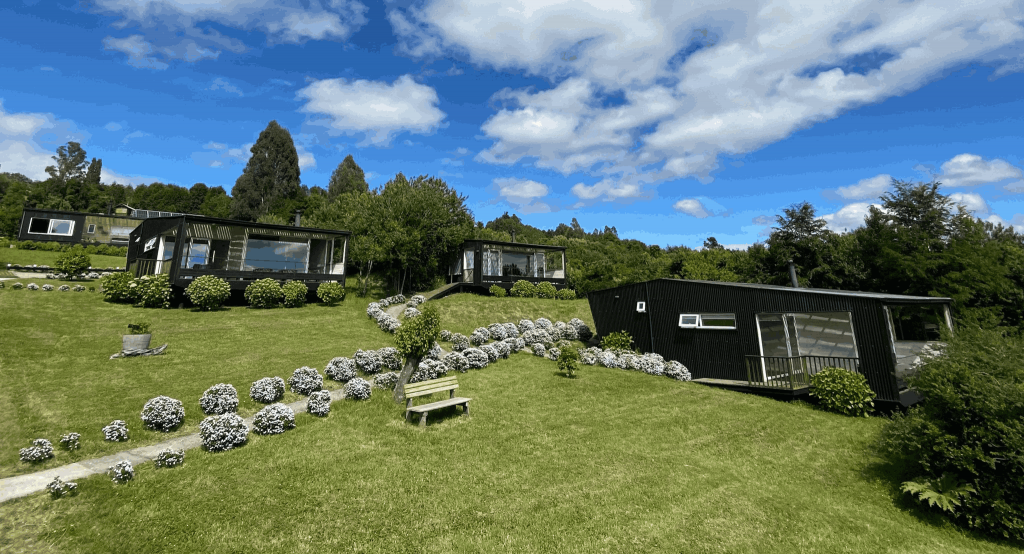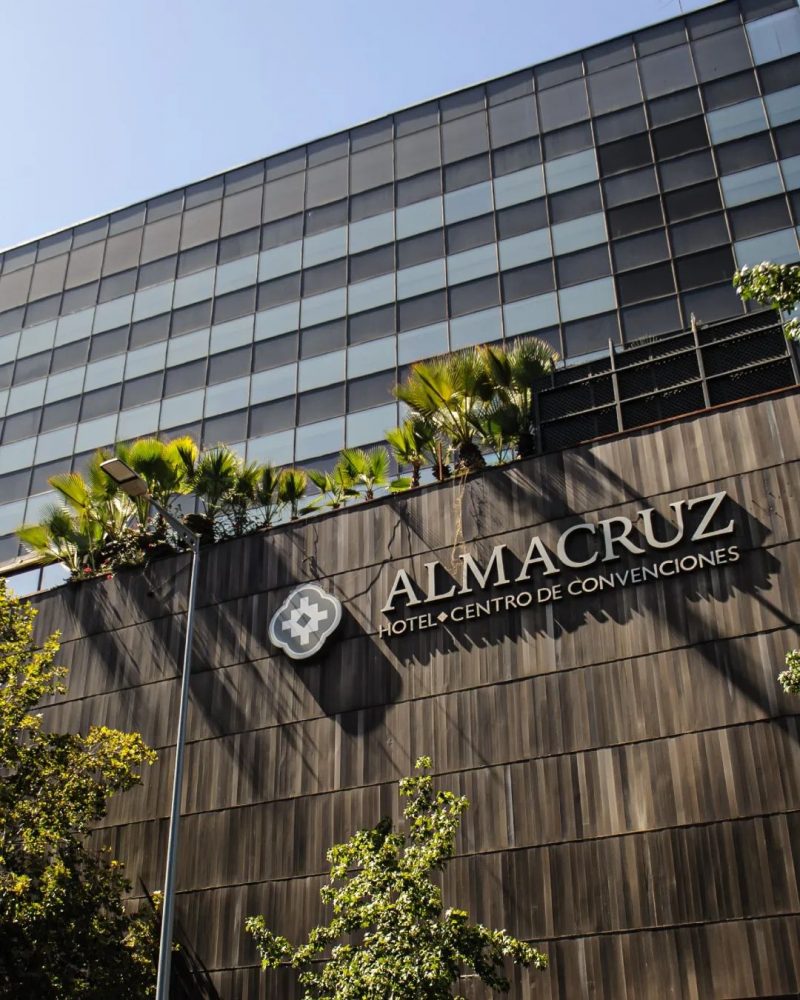
Diego Cardoen Délano is an industrial designer by profession. He began his studies in France and finished them in Chile, after which he completed a specialization course in finance and an MBA. After this, he became mayor of Vichuquén. At the age of 31 he started working with the Cardoen group in real estate, and finally in the hotel business with Almacruz Hotel and Convention Center, where he is the executive director.
In conversation with Trade News of Chile Travel, he spoke about the recognitions that Almacruz Hotel and Convention Center has received, as well as the challenges that the tourism industry in our country faces on a daily basis and how they make their guests interact with the local heritage.
Almacruz Hotel is a Corporation with a B seal.
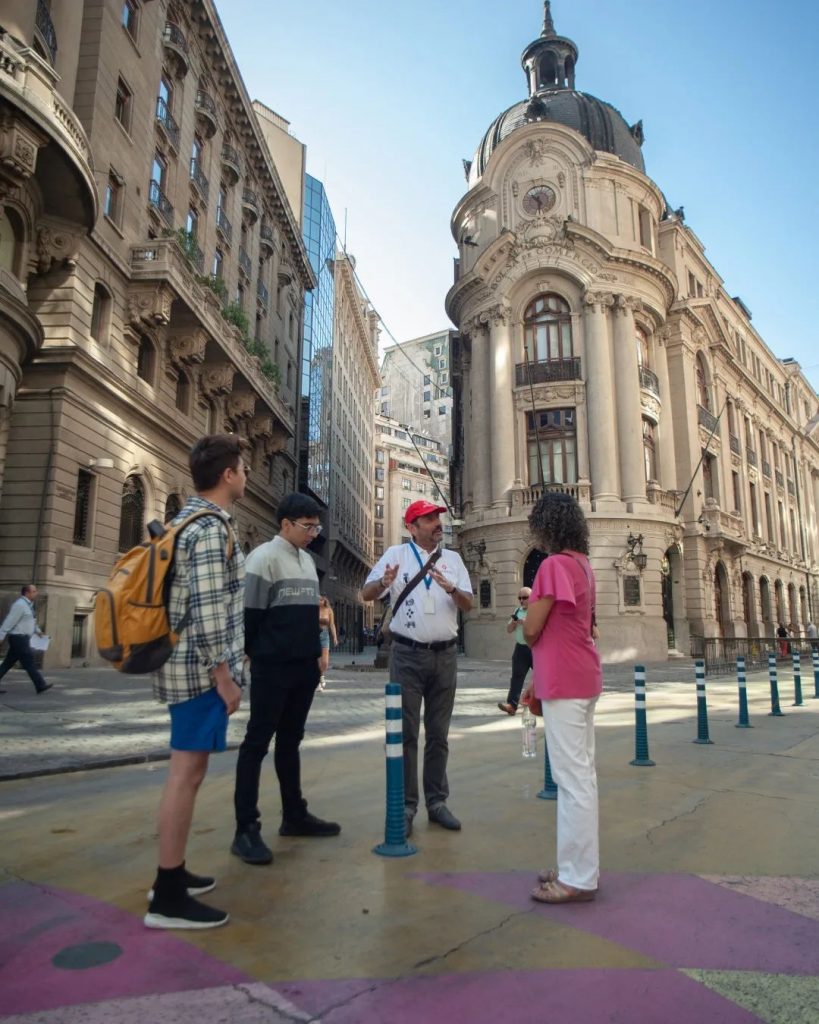
Responsibility with culture and environment in each operation. @makemake.cl
Almacruz Hotel is a tourist service registered at Sernatur and has the S seal of sustainability, awarded for the measures adopted to reduce water consumption and pollution.
Internationally, they have the B seal awarded by the non-profit organization, “B Lab”. B companies undergo a comprehensive sustainability evaluation with certification and recertification instances and make amendments to their legal governance tools.
Regarding this latest certification, Diego Cardoen pointed out that “we are the first hotel in Santiago to be certified as a B Corporation”.
-What does it mean for you to be certified as a B Corporation today?
It is a source of pride for us to be located in zone 0, a place that is highly questioned by investors. We are here, believing it is the best place to be because we feel it is a place with many aspects to honor, beautify and spread. Being a B Corporation makes us very happy. We started the certification process more than two years ago and in the middle of the pandemic, knowing that the reactivation of tourism would require a proposal that would take us as far as we could in this matter. It was difficult to certify a corporation of this size as a B Corporation, but it was a successful path and we want to encourage the entire industry to follow it, giving the importance that heritage and sustainability deserve, so that the understanding that Chile is much more than a beautiful landscape starts from us.
-What is the importance of the relationship with the environment in the tourism industry?
If we look at the extremes, we see a large resort that has a closed world on itself, so it does not have to relate to its surroundings. I believe that this type of tourism will not last very long. If you look at all the rest of tourism for decades and looking forward, you will always see a proposal of close relationship with the environment because there is the greatest satisfaction of tourism, knowing the culture that runs through the veins of the place you are visiting.
Nowadays, you can build a metaverse, and for example, tour an entire museum from the hemisphere where you are, that is why interacting with the environment is something intrinsic and beautiful of tourism, where you promote what gives you more satisfaction meeting it and being in the place. If we look at the other extreme of what happens at the resort, we have an Airbnb, where you are going to stay at someone’s home who lives in your destination and where you not only choose where you go but who you stay with, and you decide it because the person is warm or friendly, which shows a very powerful relationship with the environment.
Therefore, tourism proposes a relationship with the environment, and the deeper the relationship is, the greater the satisfaction for the client. That is why sustainability in the relationship with the environment, the communities and the surroundings have to be something intrinsic to the industry.
-What is it that makes you bet on Santiago’ downtown, especially with a view to the future?
In Chile, the hotel industry was concentrated in Providencia, Las Condes and Vitacura, and it was decided a long time ago that it did not have to be in Santiago’ downtown. The great proposal of this sector has always been to go to the coast, to go to the mountain range, in other words to travel expeditiously through the central zone. The urban, cultural and heritage theme is all concentrated in Santiago’ downtown, so we believe that it is much more practical to be there, to live it from the inside than to go in and out.
On the other hand, we see that the hotel proposals that have been made in Las Condes or Vitacura are finally a copy paste of urban proposals that have been made in the world. You can find a wonderful investment associated with a mall, a luxury district, which are really a copy paste of globalization. Taste, substance, culture, and the true experience will always be associated with what happens in the national civic center and nature.
In Chile, you have to go to the mountain range, to the coast, to wine valleys. We know that in that sense our proposal goes against the current, but we feel that it is something that tourism will be very grateful for and that if you came from so far away, you did not come here to see something repeated from what you could have seen in your home country.
-Do you also have the S seal of sustainability? What does this imply for your operation?
We have a vocation for sustainability that comes from the origin of the corporation in 1995 when we started with cultural tourism at Colchagua Museum. Since then, we have always given a seal of sustainability to everything we do.
That is why when the S seal was developed by Sernatur, we had already implemented several of the sustainable and ecological practices that made us worthy of the seal from the beginning. For example, we were the first hotel with an entire solar sanitation system with no galleries, so it was a natural step for us to achieve sustainability accreditation for both hotels.
Relationship with the environment and communities
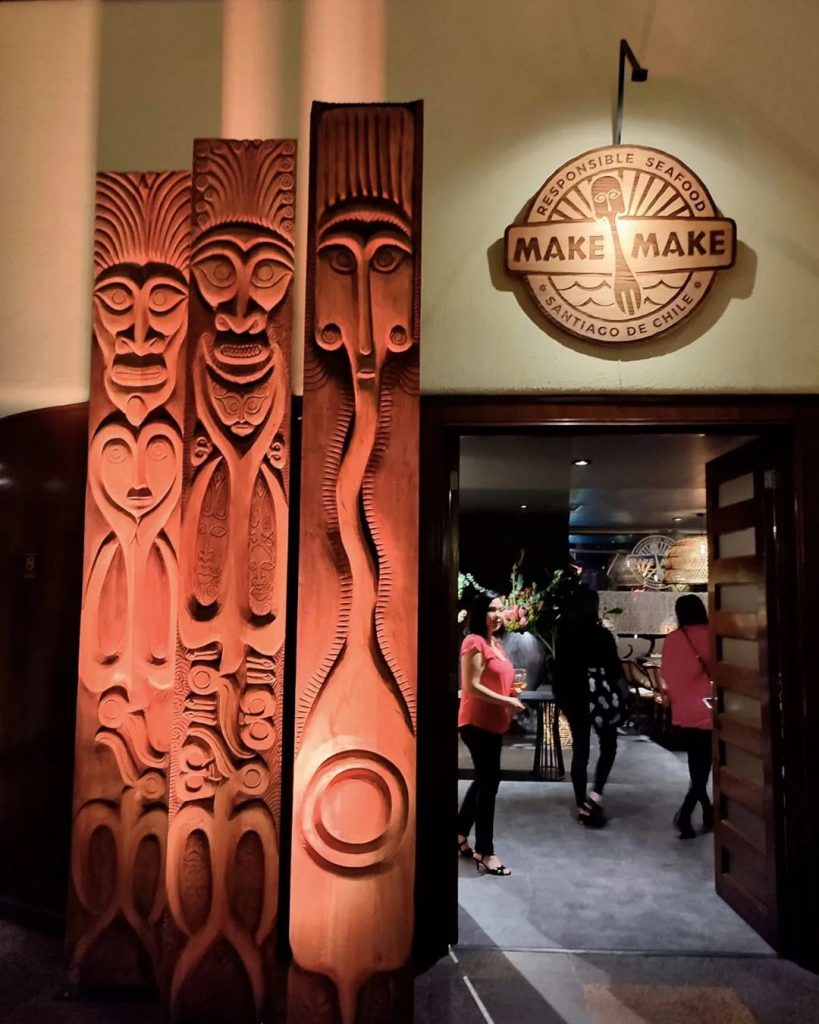
A bet for history and heritage. @almacruzhotel
During the interview, Diego Cardoen explained that much of the success achieved by the Almacruz Hotel and Convention Center is due to the close relationship they formed with the local environment and communities.
-How do you rescue the culture of the communities that live around your hotels?
We have an objective, which is to introduce our guests to the main cultures in Chile, such as the Mapuche, Quechua, and Rapa Nui. We introduce them to these cultures to generate the curiosity to investigate further. We are located in zone 0 of Santiago, and from there we make our guests interact with heritage, with the museums, and with the wine producers from the central zone, where wine exhibitions are held and where we give a face to the people who work in this production that is central to the culture of our country.
In Colchagua this is deepened even further because you can see the people who live in the central zone, the way, and the place where they produce wine. From the hotel, you can visit the vineyards, and the wine tourism theme is a great way to give a face to the local culture. Another way in which we approach our guests is through artistic expressions, to show their culture, their deities and they customs.
-How do you also integrate this culture into your products and services?
For example, when we talk about our wines, what we are talking about is the main Rapa Nui deities, like who is the Make-Make or what a chamán is in Latin America, a figure that mixes the artist, the doctor, the politician. All this can be seen in our vineyards, at our hotels and, of course, at our museums where we visually work with all these topics.
When you are at the Almacruz Hotel, you find the aesthetics that represents our culture, because many times it is said that there is little artistic manifestation by these cultures, but we believe that there is a great artistic manifestation that can be used and shown in the tourism we propose. That is our way of interacting with the environment.
-What is the role of companies in this balance?
Tourism always has to be concerned with what is going on with the corporation. I am the Colchagua Chamber of Tourism President and many times when someone is born as a tourist product, he or she believes that their only audience comes from leisure, but the truth is that the business factor is crucial to maintain a steady income throughout the year. This is something that allows you to be sustainable and generate a product that has a positive impact on the environment in the long term.
Who gives you that stability as a client is the corporation, and we open this cultural world to the corporation. Something that gives us great satisfaction is that all these commercial initiatives and launches come to be associated with the cultural aspects that we make them see.
-How do you balance the appeal to national and international audiences in your offer?
The story of the central zone is very attractive as a definition of the Chilean, from the mix of cultures. Santiago and the central zone are a cosmopolitan place within Chile. Further south you think of the Mapuches, the colonists, and the Yaganes. Then you go north and think of the Diaguitas, the Andean cultures, and mining. The central zone has a story of mixture of cultures, which is very attractive to Chileans and is defined in the national culture.
Of course, this mixture is also attractive to foreigners. Latin America is buoyant in its culture, cuisine, and in its way of celebrating because of this indigenous mixture, that is why we can provide an offer that is attractive to both the national and international public. This results in a very balanced hotel occupancy rate.
-And how does this reflect in the operation of hotels for foreigners?
In Santa Cruz, one of the challenges for us is that we are still at a 20% of inbound tourism. We want to increase this to at least 40% in Colchagua and position it as an unmissable experience in the central zone. However, Almacruz Hotel has a 50% inbound tourism and is highly valued by Europeans and by everybody who visits us from far away. This is because it concentrates and synthesizes very well in its 162 rooms, plus 3,000 square meters of lounges, bar, pool and spa, the culture of central Chile, which is shown in all the products at the Almacruz Hotel, introducing Chile, the central zone, and its cultures. Therefore, we have a great role to play with the people who come to the central zone and want to understand in a short time what it is like to be in Santiago. That is a great role of the Almacruz Hotel and that is what will lead it to having a 60% or 70% of foreign hotel occupancy rate.








